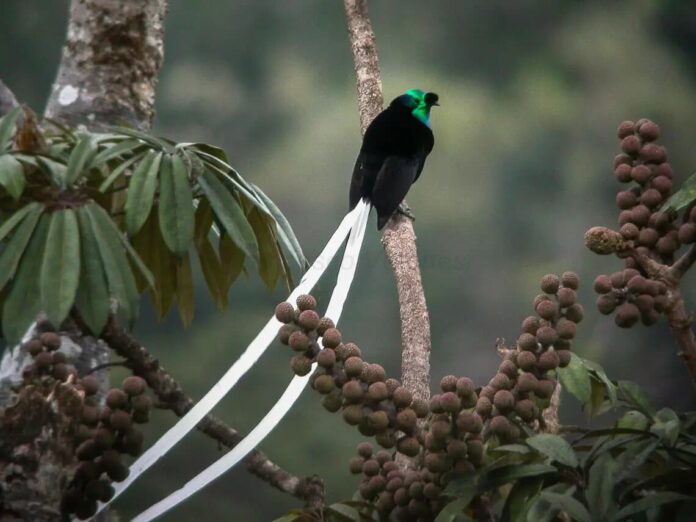Birds-of-paradise are very famous for the colorful plumage of the majority of the males. Most species of these beautiful birds are found in Eastern Australia and Papua New Guinea, and we will talk about them today. The combination of appearance and color makes most birds of paradise one of a beautiful kind to look at. There are 42 species in 15 genera, but we are going to focus on the most beautiful ones here. Maybe you already know many of them, so let’s find out more below with us.
1Blue Bird-Of-Paradise
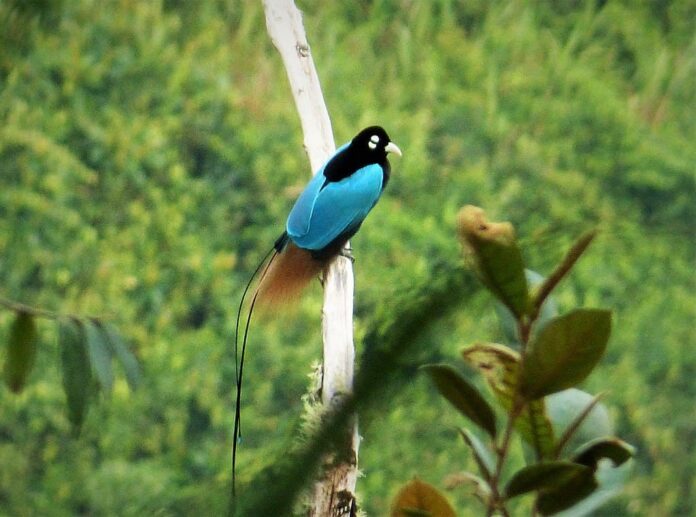
Looking so elegant and magnificent, the blue bird-of-paradise is one of the most beautiful birds in its family. Blue bird-of-paradise has a glossy black body adorned by shiny wings and tail that range from light blue to aqua. A female blue bird-of-paradise has a chestnut-brown underside instead of all-black like a male, but the wings’ coloration is the same. The males of this species have special fancy flank feathers and two long wires on their tales. These unique characteristics function as the attractive feature to impress the females during the breeding season. Blue bird-of-paradise is endemic to Papua New Guinea, distributing in mountain forests of Southeastern New Guinea.
As frugivorous birds, they feed on fruits like berries, drupes, and figs, but insects are also a part of their diet. The males are solitary so they usually feed alone while females and their juveniles associate and feed with other birds. Just like all birds of paradise, this species is also famous for the courtship performance by the males. A male performs solitary on a branch, dancing and making noises to attract the females. The males are polygamous, and he does not take part in nesting or parenting at all. This species is classified as Vulnerable due to habitat loss, hunting for plumes, and limited range.
2Emperor Bird-Of-Paradise
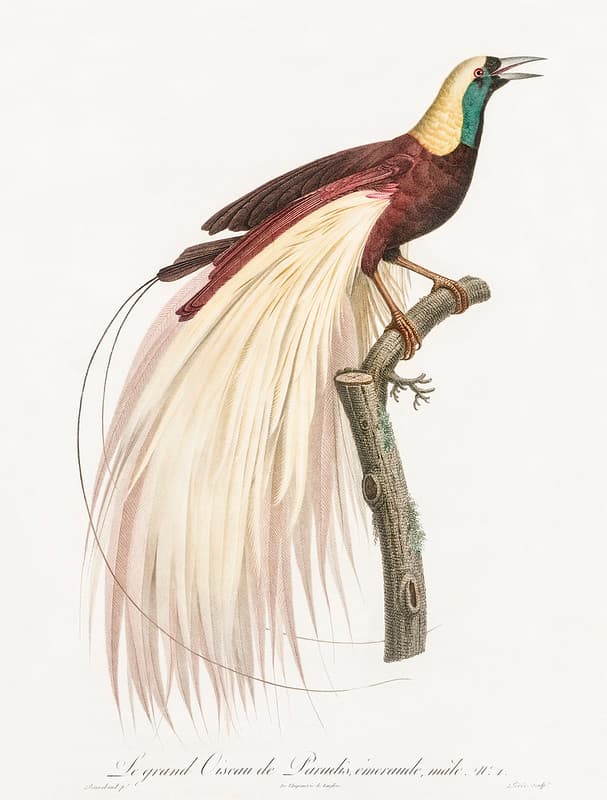
Appearing as if coming out of a beautiful painting, the emperor bird-of-paradise is a true beauty that is undeniably captivating. The male has a dark emerald-green face and throat along with a bluish-gray bill and purplish-brown legs. Its distinctive feature is the two very long tail wires that extend from the large white ornamental flank plumes. The females look similar to the male but smaller, and they lack the plumes as well as the tail wires. Emperor bird-of-paradise is endemic to Papua New Guinea where their population is considered Near Threatened. The emperor bird-of-paradise is vulnerable to prolonged threats from commercial logging and cultivation that result in habitat loss.
3Goldie’s Bird
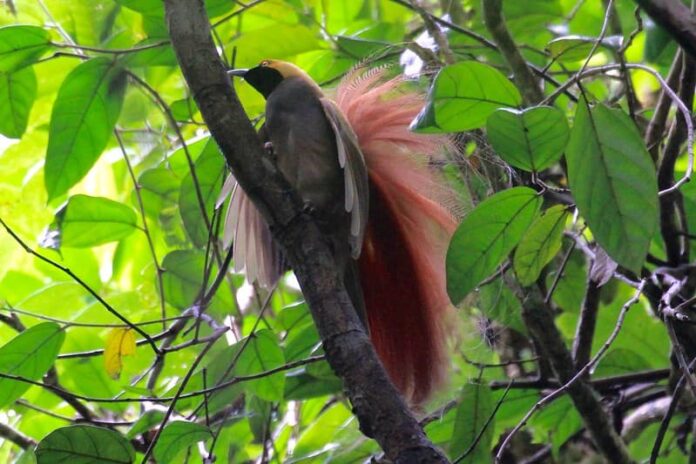
The Goldie’s bird or Goldie’s bird-of-paradise is a large bird endemic to Papua New Guinea. They live in the hill forests of Fergusson and Normanby Island of the D’Entrecasteaux Archipelago, eastern Papuan Islands. Across their range, these beautiful birds of paradise feed on arthropods and fruits that they can find. The male has dark green and yellow plumage with a lavender grey breast and gray bill, mouth, and feet. Its distinctive look is the large crimson ornamental flank plumes along with two long tail wires. They use bright and extravagant appearances to attract and impress the females during the courtship ritual. The females have olive-brown plumage with cinnamon-brown undersides without the flank and tail wires. This species is now Near Threatened due to habitat loss, limited range, and overhunting in some areas.
4Greater Bird-Of-Paradise

With the combination of large flanks with bright yellow color and two long tail wires, this bird is absolutely gorgeous. A male has an iridescent green face, and his crown, head, and nape are yellow glossed with silver. Such elegant beauty only present in the males because the females only have brown plumage and lack special features. Greater birds of paradise live in the hill lowland and lowlands of Southwest New Guinea and the Aru Islands in Indonesia. In their habitats, these solitary birds feed on fruits, seeds, and small insects.
In the courtship performance, up to 15 males perch on traditional tree display perches in their lek. During this activity, both adult males and younger males are in the lek but only the adult ones will perform. The polygamous males take turns dancing and performing to impress the females nearby who are watching. Their breeding season takes place from March to May and August to December. The fascinating thing is that these birds sometimes mate with the Raggiana bird-of-paradise which is quite unique. People hunt them for their plumes, but they are common throughout their native range with a stable population.
5King Of Saxony
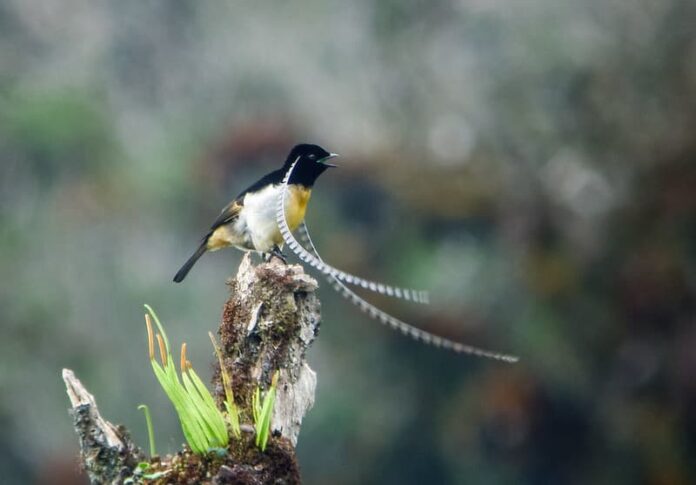
Such a fancy name for a gorgeous bird-of-paradise, and its name was to honor the King of Saxony since 1894. The males of these birds of paradise have black heads and upper parts, yellow undersides, and cinnamon wing patches. King of Saxony bird-of-paradise is famous for its striking head plumes that can be independently erected at the bird’s will. This incredible feature cannot be confused with any other bird, and that makes it absolutely unique among others. As for the females, they have grey-brown bodies and a pale underside along with gray scalloping.
Just like you expect, the males perform courting rituals using their extraordinary head plumes to their advantage. They dance and sing, and the polygamous males mate with many females his dancing skill can attract. King of Saxony bird-of-paradise inhabits the montane forests of New Guinea where they feed on fruits and insects. The natives of Papua New Guinea and Western New Guinea call them “Kiss-A-Ba” or “Leme” due to the male’s loud call. Although living in a small range, King of Saxony bird-of-paradise is common throughout their habitats which is a good thing.
6Princess Stephanie

What is special about birds of paradise is that you cannot mistake them for one another, they all have their special features. Princess Stephanie is the same, and this extravagant bird is very easy to recognize if you see one. The unique part about this bird-of-paradise is the long glossy black central tail that can reach up to 47 centimeters (18 inches). Along with the tail, it also has the beautiful coloration of greenish-blue and indigo-blue that look extremely charming. The male has an iridescent blue-green and purple head along with silky plumage and broad purplish-black tail feathers. As for the females, they have dark brown bodies with bluish-black heads with a similar tail length. Princess Stephanie is endemic to the mountain forests in central and eastern parts of Papua New Guinea.
7Raggiana Bird-Of-Paradise
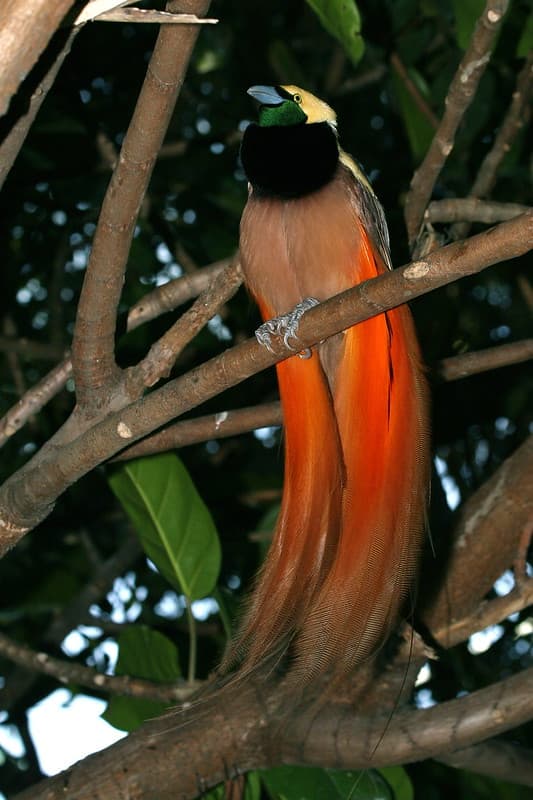
As for this one, it is a bird-of-paradise endemic to the northeastern and southern parts of New Guinea. Raggiana Bird-Of-Paradise is also a national bird of Papua New Guinea, appearing on both the national flag and national emblem. The natives call them Kumul, and the beauty of this elegant bird is so pleasant to look at. A male kumul has a maroon-brown body and dark emerald-green throat along with a yellow collar and crown. The most distinctive parts of their appearance are their large flank plumes and a pair of long black tail wires. Meanwhile, the females are maroonish-brown in color without the colorful plumes and tail wires.
Within their ranges, these birds of paradise live in forest edges, gardens, hills, lower montane forests, and lowland areas. Males will gather in leks on traditional sites in the tree canopies that have been used for generations. The polygamous males show off their dance by erecting their plumes and making calling noises. Their breeding season is between April and December, and the males mate with as many females they can impress. The females then build the nest and care for their eggs on their own without help from the males. Raggiana bird-of-paradise’s population is doing well although there are people who hunt them for their feathers.
8Red Bird-Of-Paradise
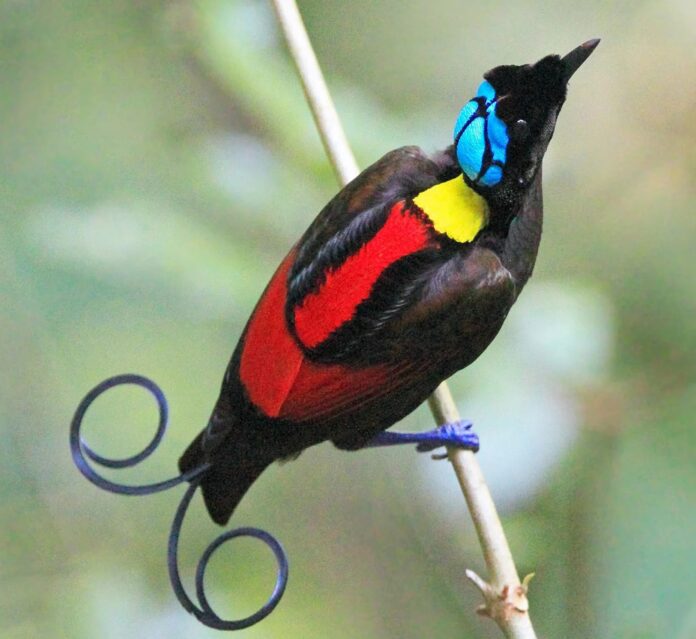
While most birds of paradise have large tails to exhibit, red bird-of-paradise still looks enchanting with their slender tails. Their overall color is brown and yellow, and the males have an emerald-green face with dark green feathers above each eye. All male red birds of paradise have a pair of elongated black corkscrew-shaped tail wires, making them look uniquely ravishing to see. Along with the tail wires, they also have ornamental red plumes that require at least 6 years to attain. As for the females, they have a similar coloration with a dark brown face but without ornamentals and tail wires. This species is endemic to Indonesia, distributing in lowland forests where they feed on arthropods and fruits.
9Ribbon-Tailed Astrapia
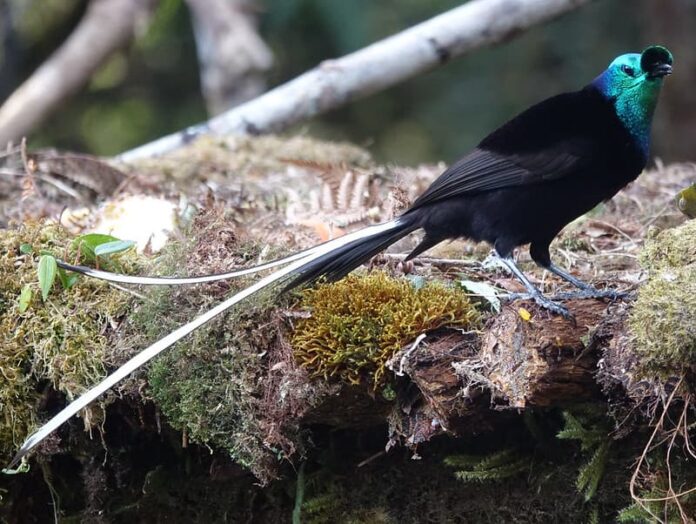
You can never mistake this bird-of-paradise for anything else, the long white tails make them stand out brightly among the crowd. This species is endemic to subalpine forests in the western part of the central highlands of Papua New Guinea. The males have velvet black bodies with iridescent olive green and bronze plumage along with long tails. Their white tails are ribbon-like with a length that reached over 1 meter, the longest tail feathers in relation to the body size of any bird. Female ribbon-tailed astrapia is duller in color, with a blackish-brown body and white smudges running down the length of her tail feathers. Ribbon-tailed astrapia is considered Near Threatened due to habitat loss and hunting for plumes. Because the males have extremely long tails, it is also hard for them to escape from natural predators sometimes.
10Wilson’s Bird
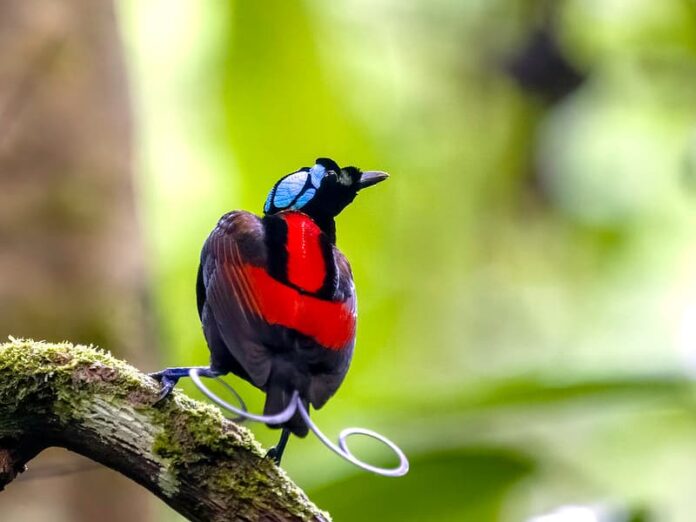
Not all birds of paradise have long tails, and Wilson’s birds are a living example of that. This species is endemic to Indonesia where they live in hill and lowland rainforests of some islands. It is a small bird with a colorful plumage of blue, dark green, red, violet, and yellow. The special thing about these birds is the two curved violet tail feathers that are different from birds-of-paradise out there. All males have deep scarlet backs and velvet green breasts that they exhibit in their mating dance. These birds are omnivores and solitary, so they venture alone searching for fruits and smaller insects to eat. Unfortunately, Wilson’s birds-of-paradise are evaluated as Near Threatened due to exploitation, limited range, and ongoing habitat loss.
Related Post: Beautiful Bowerbird Species

